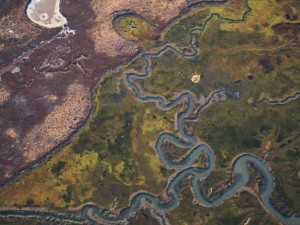 CHAPEL HILL, NC – Sharing hydrologic data and models is getting easier, thanks to Hydroshare, a Web-based collaborative environment that expands the data sharing capabilities of the Consortium of Universities for the Advancement of Hydrologic Science, Inc. (CUAHSI) Hydrologic Information System (HIS).
CHAPEL HILL, NC – Sharing hydrologic data and models is getting easier, thanks to Hydroshare, a Web-based collaborative environment that expands the data sharing capabilities of the Consortium of Universities for the Advancement of Hydrologic Science, Inc. (CUAHSI) Hydrologic Information System (HIS).
The first version of HydroShare, developed by RENCI with input from a large community of scientists and software engineers, is now available on the HydroShare website. The HydroShare beta version allows hydrologists and other scientists studying water-related issues to easily upload data from their research projects, add metadata about the data files, and contribute related links, papers and source data.
The long-term goal of the National Science Foundation-funded project is to make sharing hydrologic data and models as easy as sharing a YouTube video or shopping on Amazon.com. When fully deployed, HydroShare will allow scientists to easily discover and access hydrology data, and either retrieve that data to their desktops or perform analyses using grid, cloud or high performance computing models.
“By making data and models easily discoverable, by incorporating social media functionality and allowing people to publish their own research outcomes back to the system, we are making water science a more transparent and reproducible process,” said Jeff Heard, a RENCI senior software developer and recent lead architect for the project. “HydroShare is about enabling reproducible science in a field that has broad impact on important issues such as flooding, drought and water quality.”
Users of the beta version have the ability to upload files, add metadata to files, search other files in the system and publish their own research results. The next version of HydroShare will broaden the types of data that can be added to the system to include geo spatial data, time series data and advanced models. Social media and resource sharing functions will also be added to the system once the infrastructure is completed.
HydroShare is an open source development effort that uses the agile software development approach, in which community needs and use cases drive the development process and community feedback is incorporated into new versions of the software.
RENCI’s efforts to build the HydroShare architecture are part of a larger $4.5 million NSF project led by project Principal Investigator Dave Tarboton of Utah State University. Other partner institutions include UNC-Chapel Hill’s Institute for the Environment, Brigham Young University, CUAHSI, the University of Virginia, Purdue University, Tufts University, the University of Texas at Austin, and the University of California at San Diego.
For more information or to download the beta version of HydroShare, visit http://hydroshare.cuahsi.org/.
For more on RENCI’s role in Hydroshare, see our HydroShare research project page.


